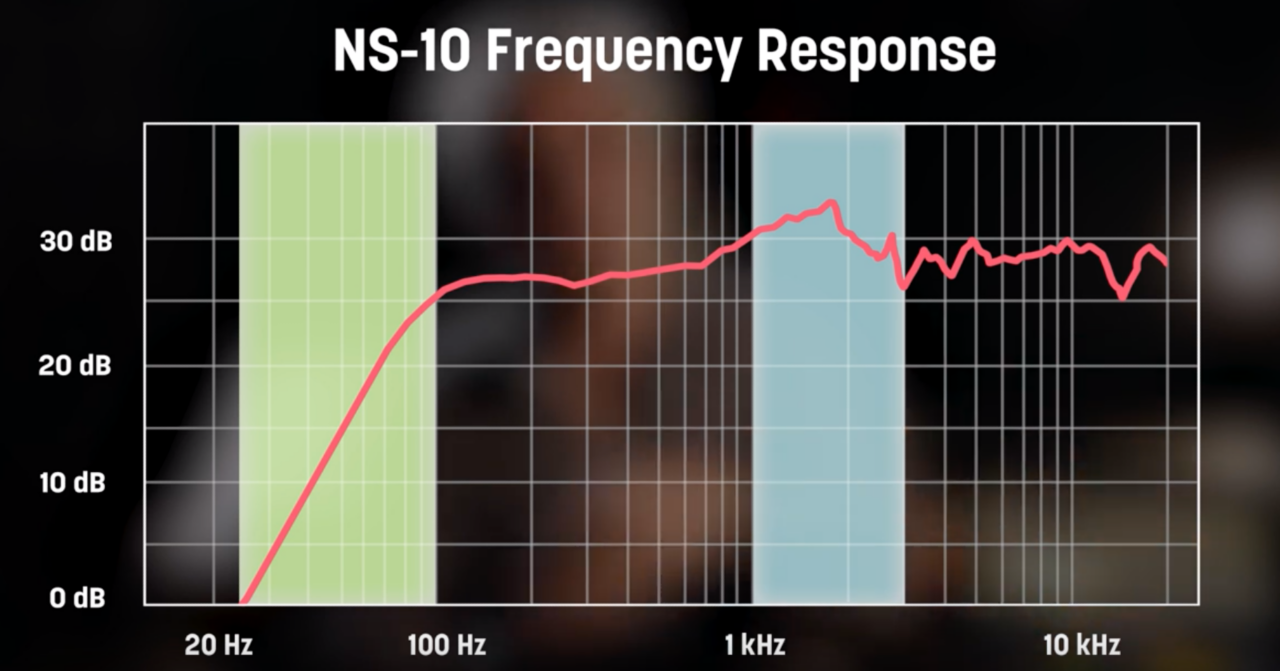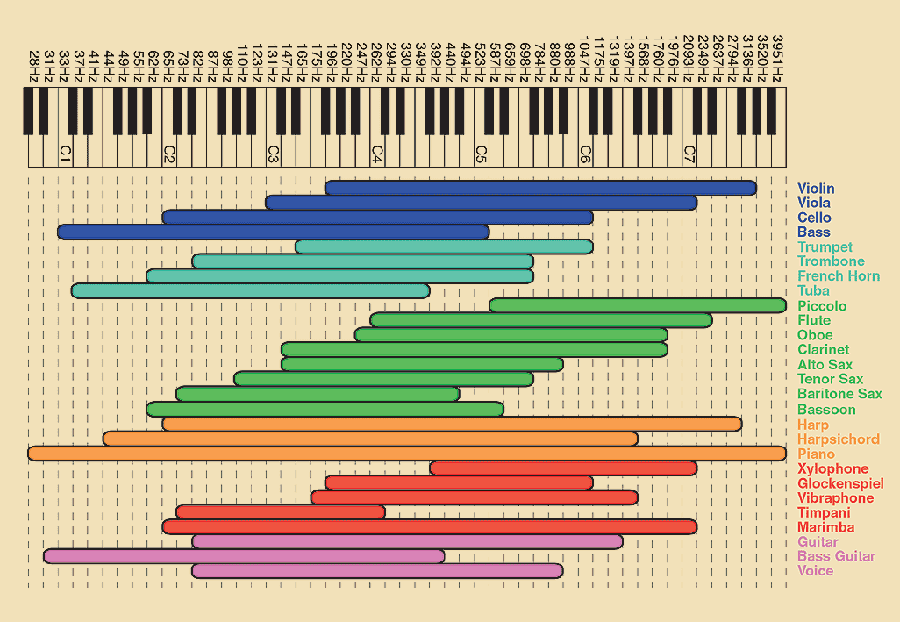What is a subwoofer? Why do you need one? How do you connect it? Come with us on a journey down to the low end of town and see why a subwoofer is a great idea in your studio.
Adding to the list of head-scratching items in the studio is the subwoofer. You see them hidden behind consoles or under desks, feeling them than hearing them. The acoustic science behind using a subwoofer is to extend the low end of your nearfield studio monitors, thus being able to hear and mix these frequencies.
Sub-bass and bass are ever more important in today’s music, with tuned 808s, sub-bass synths and hip-hop and rap dominating the mainstream. But that’s not to say they can’t be effective when mixing rock, or even classical music. Let’s look into how subwoofers work, setting it up properly, what instruments live in these registers, and how to address all that comes with the mighty subwoofer.

A trip downtown to subwoofer town
When I was offered a too-good-to-be-true price on a pair of immaculate Yamaha NS-10s (The legit older M upright model), I jumped on it. However, I quickly realised that along with the audio truth of these studio monitors, they lacked a low end I was used to with other nearfield monitors. My research found that some of the mixing greats use NS-10s with a subwoofer, for example, the multiple grammy-winning mixer Chris Lord-Alge. So began my hunt for the perfect subwoofer.
I went to my local music shop and listened to over 15 subwoofers. It was an ear-opening experience. I will tell you that, unendorsed, the KRK 8s MK2 8 inch powered subwoofer won the race. Volume, frequency selection, input and output flexibility and a footswitch control sold it. After a half-day of work, learning and tweaking my setup, I was amazed at how much better my monitoring was.
Of all the things I learnt along the way the most important thing was that I needed to learn more about mixing low end, as I could now hear it clearly.
How do subwoofers work?
Adding a subwoofer extends the low end of your nearfield studio monitors by splitting the audio information at a set crossover frequency. Your nearfield monitors get fed audio above the chosen frequency, while the subwoofer pumps out sound below this point. For example, you can set the subwoofer to cover everything under 70 Hz, while your monitors cover everything above 70 Hz. It’s not about being louder, it’s about being lower.
Setting up a subwoofer is a little complicated if it’s your first time. It’s crucial, for example, to know the frequency response of your nearfield monitors. For my Yamaha NS-10s I found that they start to drop off their low end around 100 Hz: no wonder I couldn’t hear my low end. In consequence, I was pushing the low end up too much, therefore stressing my monitors and I needed to find a way to use the monitors more efficiently.
The next step is in connection. As far as the KRK subwoofer is concerned, you connect your interface to the sub, then come out of that into the monitors. On this model, there are XLR, 1/4 inch TRS and RCA inputs and outputs, whilst most other competitors do not have all three inputs and outputs. Some monitor controllers have a separate sub output.
Once connected, the standard option on most studio subwoofers have volume, phase and crossover frequency options. I must admit, it feels nice to crank up the volume and really hear the low end, but that won’t do any good for both your mixes or healthy relationships with neighbours/fellow studio tenants.
The theory is as follows. Setup your subwoofer in the middle of your nearfield monitors, in line with them. Take the lowest cutoff of the monitors and set the filter up 1.5 octaves above. For example, if your monitors roll-off at 38 Hz, take that figure and multiply it by 1.5 to get your ideal crossover point: 38 x 1.5 = 57 Hz.
The next step is to run pink noise, on both the monitors and the sub, move the sub around, try flipping the phase and adjusting the volume. Adam audio has great instructional videos on how to do this and pink noise WAV files ready for setup with their monitors. You can download them here.

What’s down there?
The obvious low-end contenders are the bass drum (or kick drum), the electric bass and synth bass. However, a grand piano, most synths, guitars, baritone guitars and many other drums can extend down in sub town. In fact, one moment of truth I had in my studio was when the amplifier to my Yamaha NS10s was turned off, but the subwoofer on, made me realise how much information is actually down there. With a full rock band, I could hear drums, bass, guitars and synths.
Everyone needs to play nice together in those areas to not muddy your mix. The low end of; bass/kick drums live between 40-500Hz, electric bass lives between 40-400Hz, grand piano between 30-250Hz and a standard guitar go as low as 65-600Hz. Due to my ability to hear the low end, at the end of a mix I find myself slightly notching out the fundamental bass/kick drum frequency with an EQ on each instrument to allow it to cut through. There’s nothing more annoying than soloing an instrument and it sounds great, but the feeling is lost when you add everything.
Another clincher for the KRK was its footswitch option to disengage the subwoofer. That way you can listen to your nearfield monitors only still with the sub connected. But what I found particularly interesting was that my speakers sound better paired with the subwoofer. With less stress on the nearfield monitors, they were more lively.
If you are writing, producing or mixing modern pop music, which these days is heavily influenced by hip-hop, maximising your monitoring efficiency is crucial, especially when focusing on the details in the bottom end. Tuned 808s, extra-low sampled kick drums, low-end synths and deep sub-bass all come to mind when I listen to the most-streamed songs in the world atm!

Mo’ money, mo’ problems (Mo’ low, mo’ problems)
It’s worth noting that when you go lower you may find that you will more problems with your acoustics. My subwoofer is sitting on a professional bass isolating platform made by Auralex, and then there are rubber feet under each corner to future isolate the sub from resonating the floor or any other surfaces. Further to this, the studio space I work from is a large all-in-one live and control room. If you were to put a subwoofer in your studio space and it was a small square space, you may find that you will need to address some sub-bass and bass frequencies resonating. Hiring a professional acoustician and/or installing bass traps in the corners will help to contain these frequencies.
One important point bears repeating: it’s not about being louder, it’s about being lower. While a subwoofer can add to a healthy monitoring ecosystem, it’s not the be-all and end-all. Listening on a range of systems is crucial to understanding mix translation. With everyone seemingly consuming music on headphones (look around on your next public transport trip) and portable speakers, it is very important that the low-end information is mixed well as these listening devices relay clear low end to the listener.
Adding a subwoofer to your monitor setup — whether you call yourself a professional or hobbyist — can be a great audio journey and a profound lesson in what’s important in a mix. A newfound understanding of the bottom octaves will empower you to make better decisions as an engineer or producer. If you ever have the opportunity you should listen to a subwoofer on its own — you’ll be amazed at how much music you can hear.



